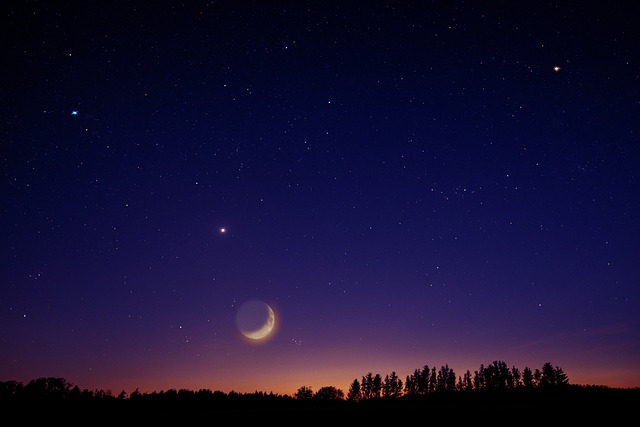Venus, Saturn, and Moon create stunning alignment in dawn hours this weekend
Stargazers willing to sacrifice their weekend sleep-in are being rewarded with a breathtaking celestial display as a mini planet parade unfolds across the eastern horizon in the pre-dawn hours.
The astronomical event, which peaks on May 23-24, features Venus, Saturn, and a delicate crescent Moon aligning in the same patch of sky just before sunrise, creating what astronomers call a “conjunction” or “massing” of celestial bodies.
This is a beautiful opportunity to see multiple worlds of our solar system lined up together.
The display comes as a welcome encore to the spectacular planet parade earlier this year, when Venus, Mars, Jupiter, Saturn, Uranus, and Neptune were all visible during the long winter nights.
However, this mini version presents unique challenges due to the timing of late spring.
The celestial show begins around 4:00 AM each morning, with all three objects visible above the eastern horizon for approximately one hour before sunrise drowns them out in daylight.
Venus, the brightest of the trio, will shine prominently alongside the razor-thin crescent Moon, while Saturn appears as a dimmer golden point of light.
The tricky part is that these objects are rising just before the Sun, which creates both an opportunity and a significant safety concern.
We’re urging observers to exercise extreme caution and never use binoculars or telescopes during this event.
Observatory officials have issued strong warnings about the dangers of accidentally viewing the Sun through optical instruments, which could cause permanent eye damage or blindness.
They recommend naked-eye observation only and stress the importance of stopping observations the moment the Sun appears above the horizon.
Friday, 23rd May, morning offers the best viewing opportunity, with the crescent Moon positioned dramatically between Venus and Saturn.
Saturday’s display shifts slightly, with the Moon tracking eastward to appear to the left of both planets.
By Sunday, the Moon will have moved further east, creating a wider spread of objects across the sky.
However, viewing conditions will deteriorate rapidly as the week progresses. The Moon is currently waning toward a “new Moon” phase on May 27, making it increasingly difficult to spot.
Additionally, earlier sunrises each day will continue to shrink the viewing window.
While the overall display will fade, Venus offers some consolation for persistent early risers. The planet is actually climbing higher in the pre-dawn sky each morning, meaning it will be visible for longer periods before sunrise by month’s end – approximately 90 minutes before dawn by late May.
Neptune, technically part of the alignment, remains invisible to the naked eye and too dangerous to observe with telescopes given its proximity to the Sun’s path.
For those hoping to catch the display, astronomers recommend finding a location with an unobstructed eastern horizon, away from city lights and tall buildings. The best viewing spots include elevated areas such as hills, coastal locations, or open fields.


